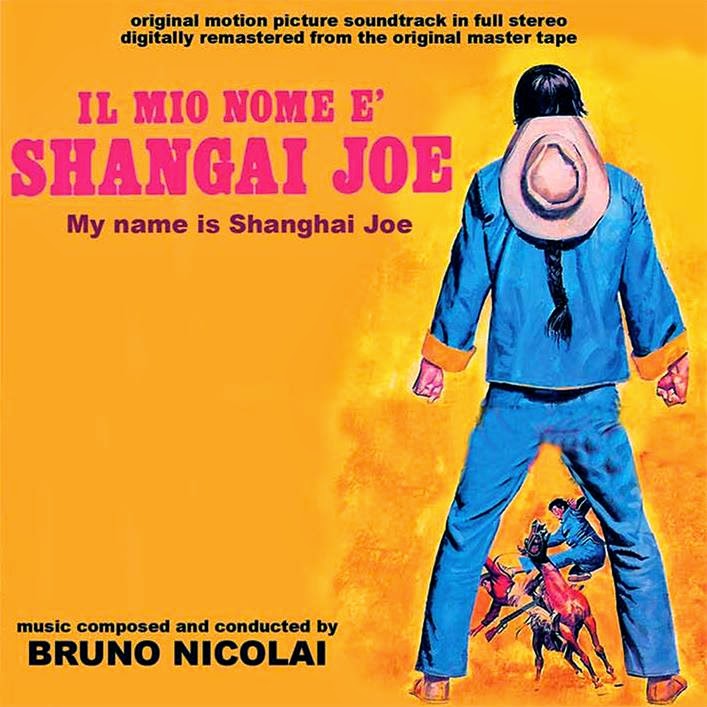(Shanghai Joe)
(1973)
Composer: Bruno Nicolai
Director: Mario Caiano
Starring: Chen Lee, Klaus Kinski, Gordon Mitchell
Label: GDM
#GDM 4174
Tracks: 15
Total Time: 73:45
Extras: booklet
Limited edition of 500 copies
Available: March 31, 2014
Track Listing
1. Il Mio Nome (2:06)
2. La Partenza (2:59)
3. Sfida (3:08)
4. Richiami D'Amore (3:05)
5. L'Allegro Becchino (1:21)
6. Nubi (2:21)
7. Il Giuramento (1:31)
8. Shanghai Joe (3:01)
9. Caccia All'Uomo (2:20)
10. Remoto (1:26)
11. Alternativa (1:45)
12. Abissale (2:38)*
13. Saloon (2:54)
14. Attimi (2:41)
15. Il Mio Nome (2:59)
(*) Previously unreleased on the original album
(The Forgotten Pistolero)
(1969)
Composer: Franco Micalizzi, Roberto Pregadio
Director: Ferdinando Baldi
Starring: Leonard Mann, Peter Martell, Luciana Paluzzi
Label: GDM
#GDM 4175
Tracks: 14
Total Time: 25:18
Extras: color booklet
Limited edition of 500 cpoies
Available: March 31, 2014
Track Listing
1. BALLATA PER UN PISTOLERO (2:31)
2. UNO SGUARDO SERENO (1:55)
3. SENZA SCAMPO (1:57)
4. BALLATA PER UN PISTOLERO II (3:28)
5. RITORNO A CASA I (1:52)
6. CORRAL DE LA MOREIRA (3:24)
7. FIATO SOSPESO (1:00)
8. FIESTA EN EL PUEBLO (1:37)
9. ALEGRIA MEXICANA (2:44)
10. SABOR DE AGUARDIENTE (1:53)
11. CALLE EN LA NOCHE (1:54)
12. RITORNO A CASA II (2:26)
13. GIARDINI VIENNESI (2:32)
14. PRIMAVERA A VIENNA (3:28
(Rebels in Canada)
(1965)
Composer: Carlo Savina
Director: Amando de Ossorio
Starring: George Martin, Diana Lorys, Luis Martin
Label: BEAT
Country: Italy
#BEATCDCR124
Tracks: 18
Total time: 41:29
Extras: 12-page full-color booklet
Available: March 31, 2014
Track Listing:
01. I tre del Colorado (seq. 1) 2:09
02. I tre del Colorado (seq. 2) 3:04
03. I tre del Colorado (seq. 3) 2:49
04. I tre del Colorado (seq. 4) 1:46
05. I tre del Colorado (seq. 5) 2:00
06. I tre del Colorado (seq. 6) 1:41
07. I tre del Colorado (seq. 7) 1:34
08. I tre del Colorado (seq. 8) 2:35
09. I tre del Colorado (seq. 9) 2:35
10. I tre del Colorado (seq. 10) 2:08
11. I tre del Colorado (seq. 11) 2:57
12. I tre del Colorado (seq. 12) 2:31
13. I tre del Colorado (seq. 13) 2:15
14. I tre del Colorado (seq. 14) 2:00
15. I tre del Colorado (seq. 15) 2:37
16. I tre del Colorado (seq. 16) 2:23
17. I tre del Colorado (seq. 17) 1:53
18. I tre del Colorado (seq. 18) 2:30












































